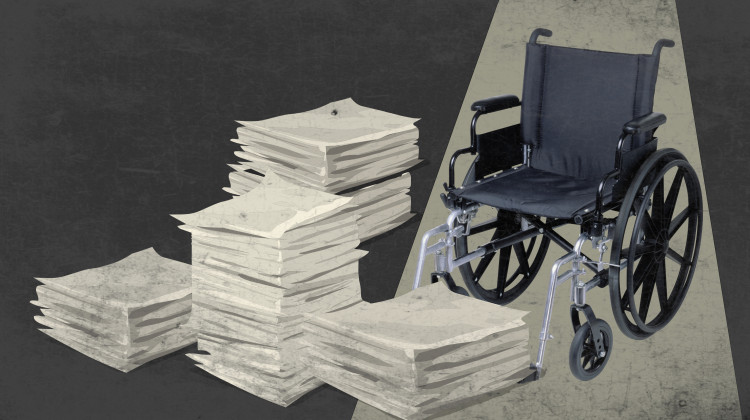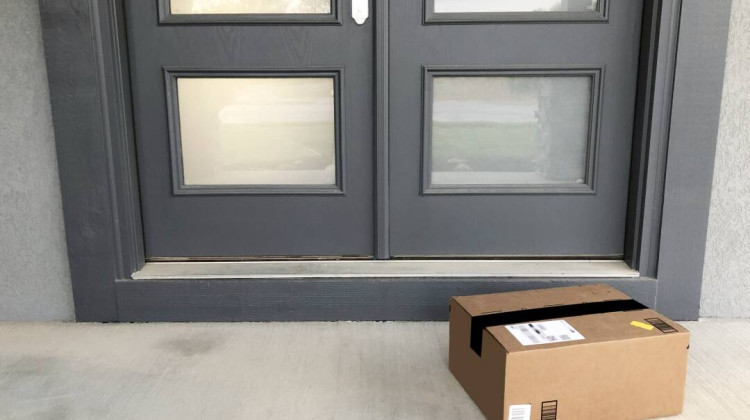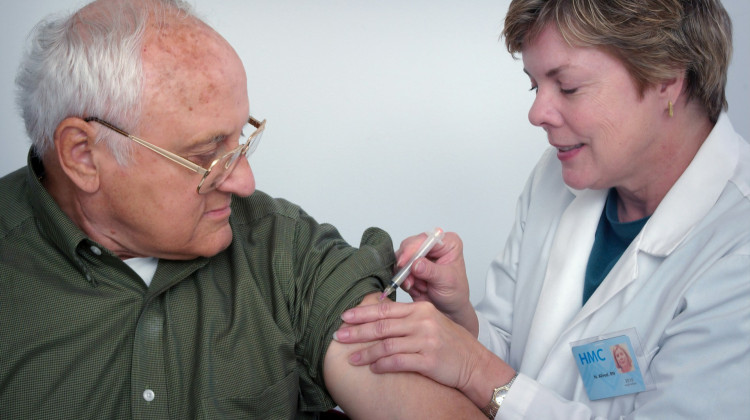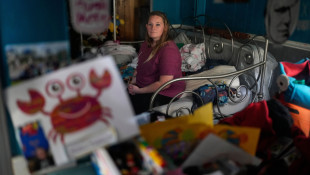
Twelve million of the countrys most vulnerable patients are stuck navigating two separate insurance programs Medicare and Medicaid to get the care they need.
Illustration for Side Effects Public Media/Farah YousrySaleema Render-Hornsby was shocked by the letter she had just received from Medicare. “It felt like they were denying me my legs,” she recalled. “Like they were taking away my liberty to move.”
It was the summer of 2022 and the Bronx resident was hoping her insurance would approve a new wheelchair, as her old one kept breaking down. Render-Hornsby was born with spina bifida, a spinal cord issue that limits use of her lower legs.
This fall, more than a year after receiving that first denial letter, the 33-year-old aspiring cosmetologist still does not have the working, well-fitting wheelchair she needs to live independently.
Render-Hornsby belongs to an exclusive club of roughly 12 million people sometimes called "the dually eligible."
The club is made up of people who have low incomes and who are also either disabled or over 65, with some checking off all three boxes.
"Duals" are forced to navigate both of the country's two largest public health insurance programs, Medicare and Medicaid, to get the care they need.
Each program plays critical and fundamentally different roles for this population.
Medicare, which covers people 65 and older and those with disabilities, tends to pay for urgent medical needs like surgeries and hospital stays. Medicaid, the program for those with low incomes, typically picks up longer term services like regular home visits from an aide.
But there are plenty of gray areas. Knowing what service is covered by which program and when can easily devolve into a Kafkaesque nightmare.
Many of the people stuck traversing what is arguably U.S. health care’s most infuriating maze are among the country’s sickest, costliest and poorest patients.
About one-third have a serious mental illness. Around two-thirds have at least three chronic medical conditions. Roughly nine out of 10 people enrolled in these two programs live on less than $20,000 a year.
Together, Medicare and Medicaid spent nearly $450 billion in 2019 on these patients. Yet many, like Render-Hornsby, still struggle to get the care they need.
"The federal taxpayer is spending trillions of dollars for incredibly bad outcomes,” said Republican Sen. Bill Cassidy of Louisiana, who’s leading a bipartisan effort to address this issue.
A disjointed system rife with dead ends and denials of care
Render-Hornsby’s wheelchair saga exemplifies the challenge.
The New Yorker needed a new chair after her hulking old one, which she’d coined the Cadillac, had stopped living up to its name.
It even stalled out one summer day in the middle of a busy city street as cars and taxi cabs sped by.
After more than two years making do with a backup chair that her mom bought off Amazon for $1,000, Render-Hornsby contacted Independence Care System (ICS), a local health care nonprofit serving people with disabilities.
They recommended a much lighter chair that Render-Hornsby could maneuver on her own. She started to imagine the future that chair could make possible – traveling, working as a cosmetologist and finally, living on her own.
“I could be myself,” Render-Hornsby said. “And experience life as a whole person.”
The staff at ICS began to slog through the bureaucratic jungle that is Render-Hornsby’s pair of health insurance plans with their complex rules and conflicting financial incentives.
ICS workers were confident Medicaid would cover the chair, but only after they had proved that Medicare would not.
That meant Render-Hornsby’s providers first billed Medicare despite a near certainty that Medicare would reject the request.
ICS senior vice president Jean Minkel said these two disjointed federal programs combine to make life harder for the dually eligible.
“[This system] puts a big burden of responsibility on a group of people that don't have a lot of time given that everything in their lives takes more time.”
Many patients quit when forced into this administrative morass.
“Very often the first denial becomes the end of the story,” Minkel said. “It’s ‘my insurance said no’ and it’s not obvious what your next step should be.”
While ICS spent more than a year navigating three rounds of insurance denials, Render-Hornsby sat and seethed.
"Medicaid and Medicare need to get it together and communicate with each other," she said.
"I already went through the step of explaining what I need. Why do I have to keep repeating myself, saying ‘I need this, I need this’ until I'm blue in the face?"
Her quality of life and health suffered as the process dragged on.
The backup chair fits poorly and its flimsy cushioning gives her pressure ulcers and nerve pain. She feels every single bump as she rides New York City's accessible transit vans.
“It feels like it’s sandwiching your spine and your head together and crushing your bones," she said.
Making do with her second-rate chair has restricted Render-Hornsby's life.
She thinks twice, she said, before taking any trip outside. Is it worth the pain or the chance that this cheap chair could break and leave her stranded? She sees her friends less often.
Federal lawmakers float one way to simplify this system
As far back as the 1990s, state and federal policymakers have tested ways to tidy up this bifurcated, byzantine mess.
The most common approach creates a single health insurance plan to manage both the Medicaid and Medicare sides of a person’s benefits.
“The goal is a seamless experience for the consumer — a single insurance card, a single set of benefits,” said Allison Rizer, principal at ATI Advisory, a research and consulting firm.
Yet the concept has struggled to gain traction. Just one out of every 10 dually eligible people is enrolled in what wonks call a “fully integrated care plan.”
Federal lawmakers, though, have recently been eyeing ways to boost those numbers.
A bipartisan Senate bill floated earlier this summer would require every state to make at least one integrated care plan available. The plans would be vetted by the Centers for Medicare and Medicaid Services to ensure they offer meaningful differences from the status quo.
“The problem is bigger than any one state can manage,” said the bill’s lead author Sen. Cassidy in an email to Tradeoffs. “It takes federal solutions, which then states can adapt to their particular circumstance.”
Too little evidence and too many insurance plans could sink the legislation’s lofty goals
Experts agree the bill has the potential to make significant improvements on a widespread problem.
But they also caution that the legislation, as drafted, has several shortcomings.
Some people who are dually eligible already have more than 100 different Medicare plans to choose from — most of which offer no coordination with Medicaid.
For enrollment in these more integrated plans to grow, Rizer said, it must be easy for consumers to distinguish them from the competition.
“If you just add another option, it's not going to be successful,” she said.
A second concern is evidence. There isn't much, said Harvard physician and researcher Jose Figueroa.
“The data to understand if and how these programs work is just not out there,” Figueroa said. He warned the dearth of information could lead states or Washington to embrace models that may be lower quality or more expensive than intended.
Figueroa did add that deeper research is in the works, thanks to more recent and higher quality data.
Insufficient state and federal oversight tops the list of concerns raised by patient advocates. Without adequate protections, they worry private companies who run many of these integrated plans could prioritize profits over delivering high-quality, coordinated care.
"I'm glad to see lawmakers paying attention to this population," said Georgetown University professor Judy Feder. "But if legislation promotes or even pushes people into plans that are not well monitored, that will be a step backwards."
Senators are expected to introduce a formal bill before the end of the calendar year.
Good news arrives — 18 months later
In August, a full year and a half after beginning the process to get a new wheelchair, Saleema Render-Hornsby's request was approved by her Medicaid insurance plan.
The chair has yet to arrive, but she hopes it will show up by early October.
“I’ve got big plans for my birthday,” she said.
After all those months playing it safe — sacrificing joy for the sake of her safety — Render-Hornsby is ready to take a risk.
“I’m going to Vegas,” she said. “I’m going to do a little bit of gambling.”
She wants to see the Hoover Dam and the Grand Canyon, too.
This story comes from the health policy podcast Tradeoffs, whose coverage of complex care is supported, in part, by Arnold Ventures. Dan Gorenstein is Tradeoffs' executive editor, and Leslie Walker is a senior reporter/producer for the show, where a version of this story first appeared.
Side Effects Public Media is a health reporting collaboration based at WFYI in Indianapolis. We partner with NPR stations across the Midwest and surrounding areas — including KBIA and KCUR in Missouri, Iowa Public Radio, Ideastream in Ohio and WFPL in Kentucky.
9(MDAyMzk1MzA4MDE2MjY3OTY1MjM5ZDJjYQ000))
 DONATE
DONATE






 View More Articles
View More Articles




 Support WFYI. We can't do it without you.
Support WFYI. We can't do it without you.